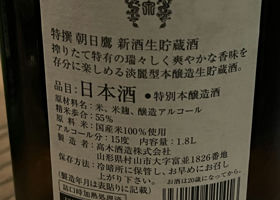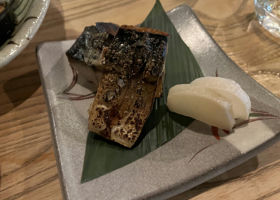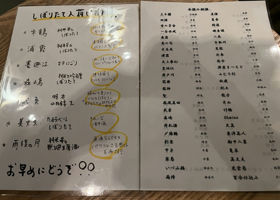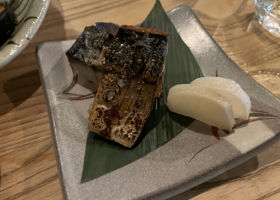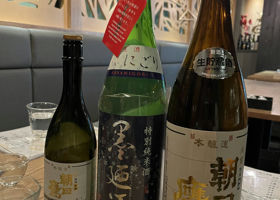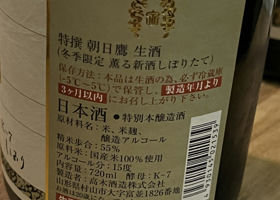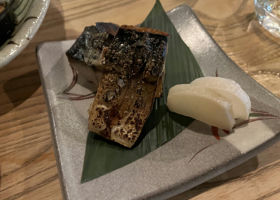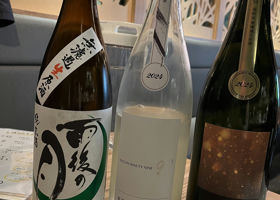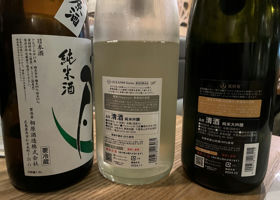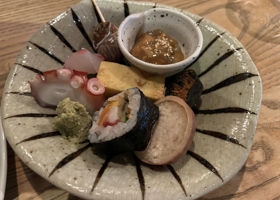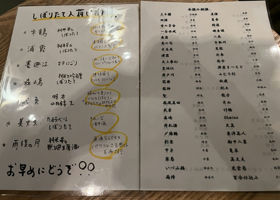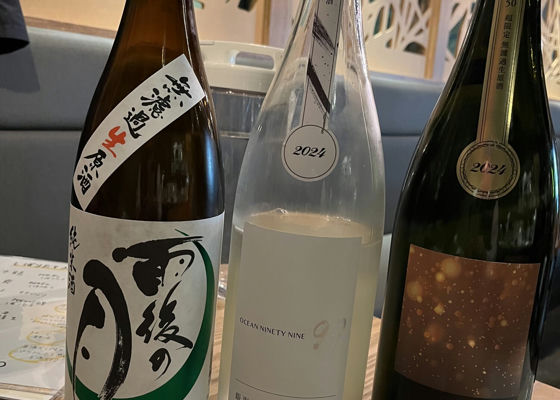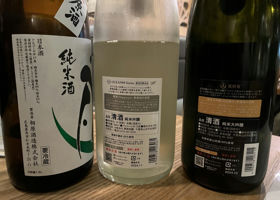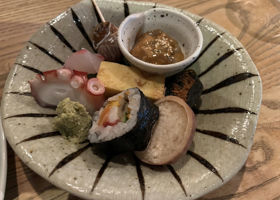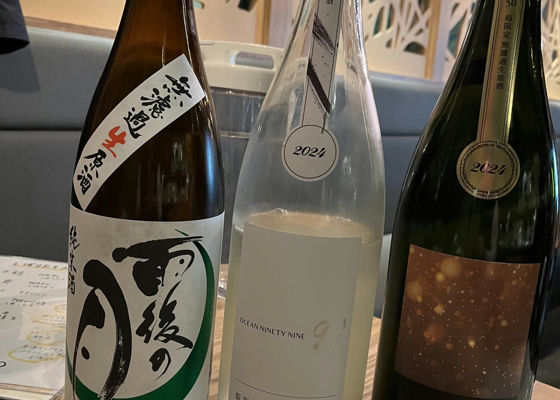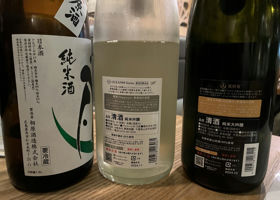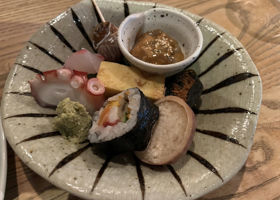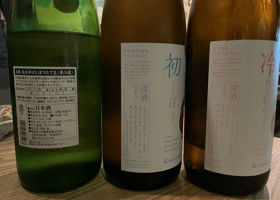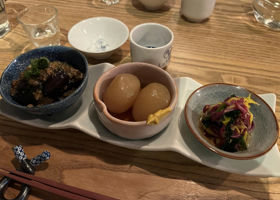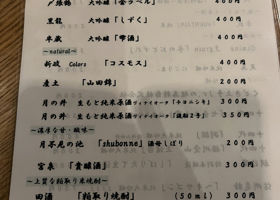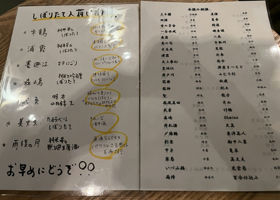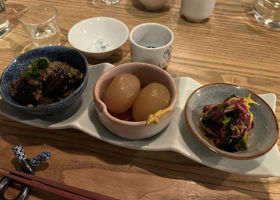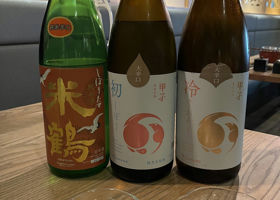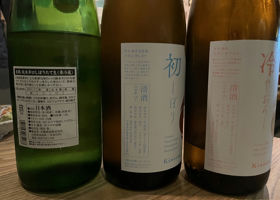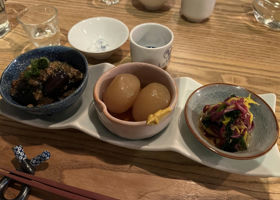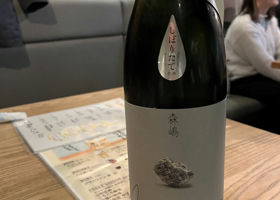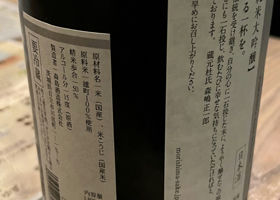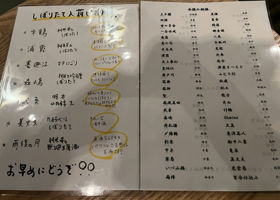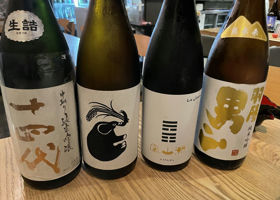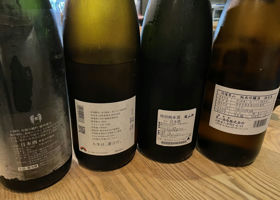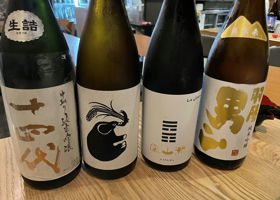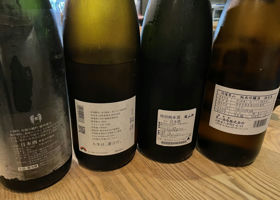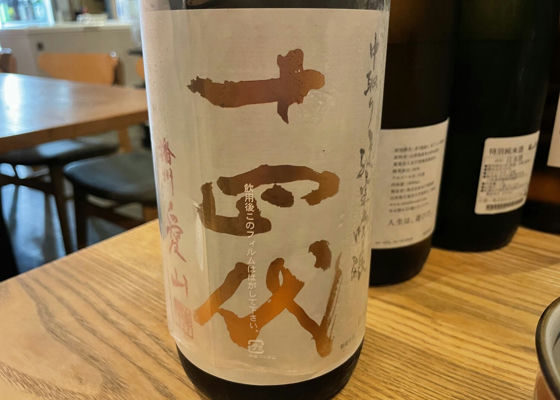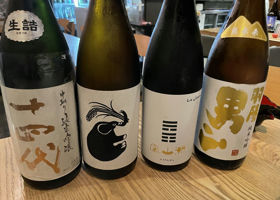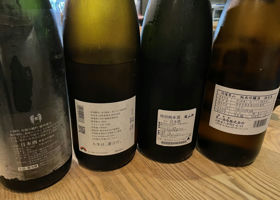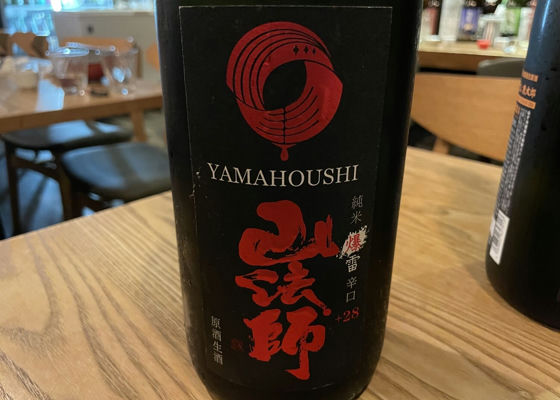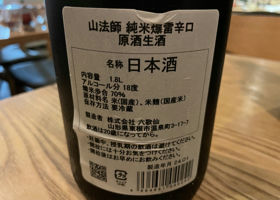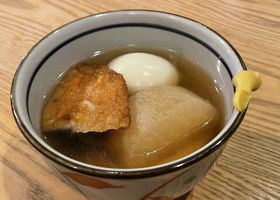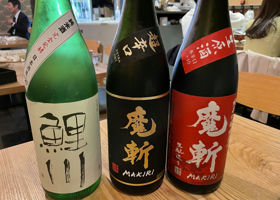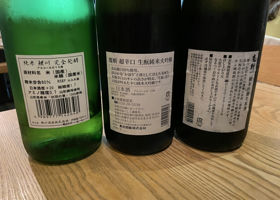Timeline
しんしんSYComparison of Asahitaka
This one seems to be darker than the previous one!
Asahitaka is the best 😃.
Knowledge
Raw material rice: Yamagata Prefecture's preferred rice for sake brewing ● Koji rice: Hashu Homare (our own rice polishing brand) ● Kake rice: Miyamanishiki (rice produced in Yamagata Prefecture)
Polishing ratio / sake degree ≪Haneshu Homare, 55% polished rice, Miyamanishiki, 60
Alcohol 15% (15 degrees Celsius) しんしんSYMaster's Choice of Miyagi Sake.
I haven't been to Ishinomaki recently.
Comparison with Asahitaka
A sharp and dry sake must be included in the comparison!
knowledge of how to make the best use of one's knowledge
Light nigori type junmai nama sake with a citrus aroma and a fresh, crisp taste reminiscent of freshly squeezed grapefruit
Alcohol percentage 16
Rice polishing ratio 60 しんしんSYNext cool, the master will have a local Miyagi sake.
I'm going to try something that you can only drink here at Yamagata Shoei.
Let's compare Asahitaka's draft sake and fresh stored sake 🍶🍶🍶.
Nama sake is an additional 200 yen to the all-you-can-drink price!
A cup of sake from a four-pack
Half and half with the master
Reminiscent of Jyushiyo, delicious and my favorite 😋!
Grilled fish also made an appearance!
We were a little late eating because of all the chatting 🤏!
Most of the customers around us had already left!
We will have some more at our pace!
extensive knowledge
Alcohol 15%.
Rice polishing ratio 55
Yeast K-7 しんしんSYPassage 4500
I was wondering what it would be this time, here, before coming to Shouei's.
I didn't think which one in particular, but it was a nice sake!
I like Denshogiku, don't you?
It was a beautifully polished and wonderful sake 🍶.
extensive knowledge
Rice used: Yamadanishiki
Polishing ratio: 50
Sake degree: -6
Acidity: 1.5
Alcohol content: 15 しんしんSYI told the young waiter that it was time to order Kangiku.
He said he had two bottles of this as well as Koshi, and brought two bottles of Kangiku!
I'll drink them both, so please leave them here!
First, Ginkai!
I had a bottle of Shiro Ginkai a while ago, so I wanted to drink this one too!
I wanted to drink this one, too, because I had been drinking a lot of dry sake!
A master I met in Shikoku!
We had a lot of fun talking about the old days at Uotora Ryokan!
a lot of knowledge
Rice : Japanese rice
Rice polishing ratio : 55
Alcohol content : 16 しんしんSYNext, the master chose Hiroshima sake, Amego no Tsuki
It is a new sake.
It is also dry!
Around this time, the next entrée appeared!
Sushi rolls, sashimi, etc., perfect with sake!
After this, let's mix in some of my favorite fruity sake 🍶🍶🍶!
my vast knowledge of sake
Alcohol content: 17
Rice:Hachitan-Nishiki
Polishing Ratio : Koji rice 60%, Kake rice 65
State:Nama Sake しんしんSYKoshi Super Dry Drink Comparison
This one is labeled "cold grated" in pink letters.
There was not much left, so there was no fizziness anymore, but I guess it must have been very fresh when it was just opened!
The left side of the entrée is eggplant with hot spicy sauce!
This sweet and spicy sake!
I'll drink it again this day 🍶!
the secrets of the brewery
Alcohol content: 16%.
Rice polishing ratio: 80
Sake degree: +8.5 しんしんSYThe master's parents live in Chiba.
If so, there were two kinds of Chiba sake, so I asked for Koshi and Kangiku without hesitation!
The waitress, two young women, seemed to have just entered the restaurant!
The waitress brought two heavy bottles of sake!
She asked me, "What would you like me to do with the two bottles of Koshi? She asked me what I would like to do.
Let's compare the Koshi with the Kangiku for later!
The light blue letters said "Hatsushibori" (first pressing) and "Shinshu" (new sake).
It's a new sake, isn't it?
The cork is too tight and won't open.
A nice sound!
I expected fruity sake from Kouko, but both of them are dry!
Dry sake parade including Yonetsuru!
Nice fresh sake 🍶!
I like tamakonnyaku!
It goes well with sake!
knowledge of how to drink
Alcohol content: 15
Rice polishing ratio: 80 しんしんSYMaster also drank Morishima, and from here, Master will select from the store's recommended freshly squeezed new sake.
I will select a brand from the regular menu to compare.
The one chosen by the master was Yonetsuru!
We talked about the Yonetsuru meeting at Ami in Sendai and the memories of tasting various Yonetsuru.
Orange label on this day!
We used to compare the pure Yonekaku with the cloudy one!
The Ami store has closed this year 😵.
This new Yonekaku is very dry!
Let's make this cool and crisp since we also made it dry for the sake comparison.
The appetizers are all representative of Yamagata!
Edible chrysanthemum Enmeiraku, the sourness of which goes well with the dry sake!
Knowledge and Skills
Rice Koji rice: Dewanosato (Yamagata Prefecture), Kake rice: Dewa Kirari (Yamagata Prefecture)
Rice polishing ratio 65
Nama-shu (fire-aged, unpasteurized)
Sake Degree +5
Acidity 1.5 しんしんSYHe came to Yamagata again at the end of the year
Year-end party with Mutsu's master
Sorry for the late start!
When we arrived at 9:00 p.m., there was a sign saying that the restaurant was fully booked on that day 🈵.
Thank goodness I made my reservation early!
Master started with beer
I'll start with sake!
Oops, I found Morishima!
Tonight starts at ▶️
Nice aroma!
Deliciously sweet and fruity!
I had a freshly pressed Omachi sake once in Kurashiki!
Smiles on the faces of the customers around us: ☺️
There were more sakes than usual to choose from that day, and they were enjoying them!
I'm going to enjoy it too!
knowledge of the brewery
Rice used: Bizen Omachi
Polishing ratio ... 50%.
Sake degree ... +2
Acidity: 1.8
Yeast・・・No.901
Alcohol content・・・・15(Draft) メキシコテキーラThe 13th glass is also a Yamagata sake. This is the first time. メキシコテキーラIt is almost time for the final cool. The master recommended Yamagata Masamune's Inazo. メキシコテキーラMaster's recommendation: Jyushiyo! RecommendedContentsSectionView.title

